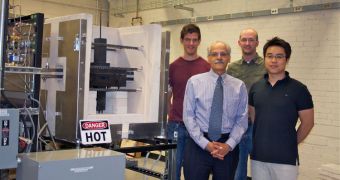Carbon capture and storage (CCS) have been under research for years, but their high costs have thus far prevented their widespread implementation. Now, a system created by experts in the US could make it easier for fossil fuel-powered electrical plants to reduce their emissions.
Greenhouse gases have been demonstrated to cause global warming directly, so reducing their concentrations in the atmosphere is necessary in order to avoid damaging climate changes.
Power plants burning coal, oil and natural gases are among the main contributors to GHG emissions, so capturing the carbon dioxide they produce would result in a significant decrease in the concentration of atmospheric pollutants.
Researchers at the Massachusetts Institute of Technology (MIT) created a membrane that is able to extract all byproducts in power plant waste, except CO2. This approach therefore produces pure CO2.
Though this may appear counterintuitive at first, this approach is actually very effective, since pure carbon dioxide is a lot easier to trap and store than when augmented with nitrogen and other pollution byproducts of electricity generation.
At this point, extracting CO2 from the exhaust plumes is a process that requires a lot of energy, special chemicals and expensive hardware. Using the new membrane developed at MIT, these requirements could be significantly reduced, potentially opening the way for the wide-scale implementation of CCS.
The membrane is very effective in removing compounds such as water and other gases from the exhaust plumes. It can also take out the oxygen left in this mixture. The device has also been demonstrated in a small-scale reactor built at the Institute.
Details of the ceramic membrane were published in the latest issue of the esteemed Journal of Membrane Sciences, and will also be presented at the International Symposium on Combustion, which will take place this August.
“What we’re working on is doing this separation in a very efficient way, and hopefully for the least price,” explains Ahmed Ghoniem, who is the MIT Ronald C Crane professor of engineering.
“The whole objective behind this technology is to continue to use cheap and available fossil fuels, produce electricity at low price and in a convenient way, but without emitting as much CO2 as we have been,” he goes on to say.
“We are learning enough about the system that if we want to scale it up and implement it in a powerplant, then it’s doable. These are obviously more complicated powerplants, requiring much higher-tech components, because they can much do more than what plants do now,” Ghoniem adds.
“We have to show that the [new] designs are durable, and then convince industry to take these ideas and use them,” the team leader concludes.

 14 DAY TRIAL //
14 DAY TRIAL //